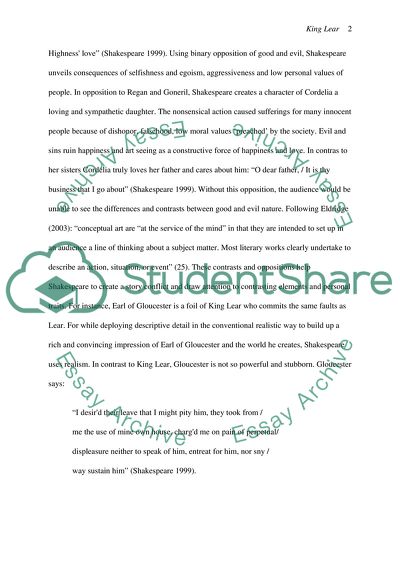The Concept of Art in King Lear Essay Example | Topics and Well Written Essays - 1500 words. https://studentshare.org/literature/1709289-art-is-essentially-serious-and-beneficial-a-game-played-against-chaos-and-death-justify-this-using-the-play-king-lear-by-shakespeare
The Concept of Art in King Lear Essay Example | Topics and Well Written Essays - 1500 Words. https://studentshare.org/literature/1709289-art-is-essentially-serious-and-beneficial-a-game-played-against-chaos-and-death-justify-this-using-the-play-king-lear-by-shakespeare.


